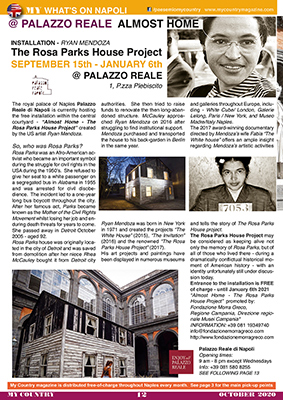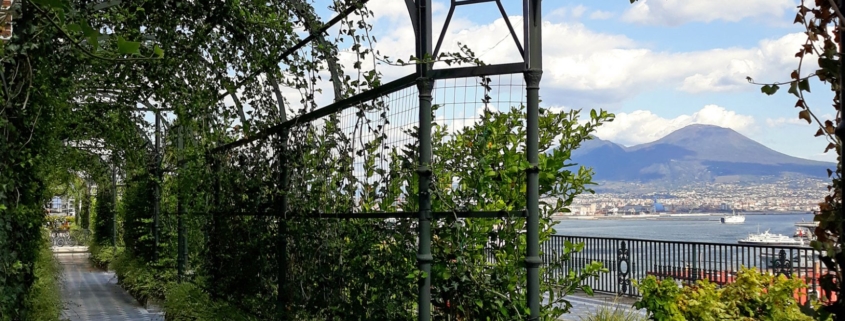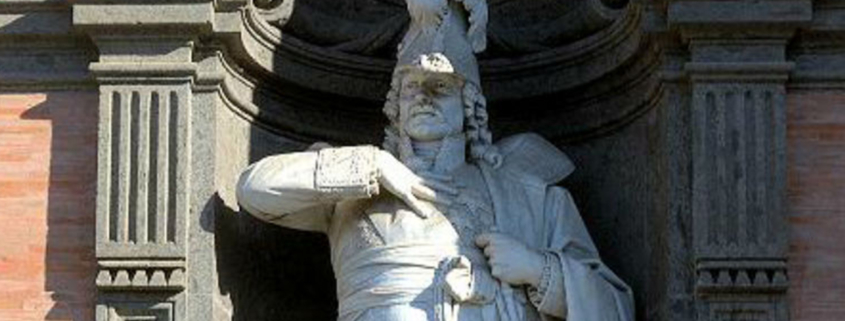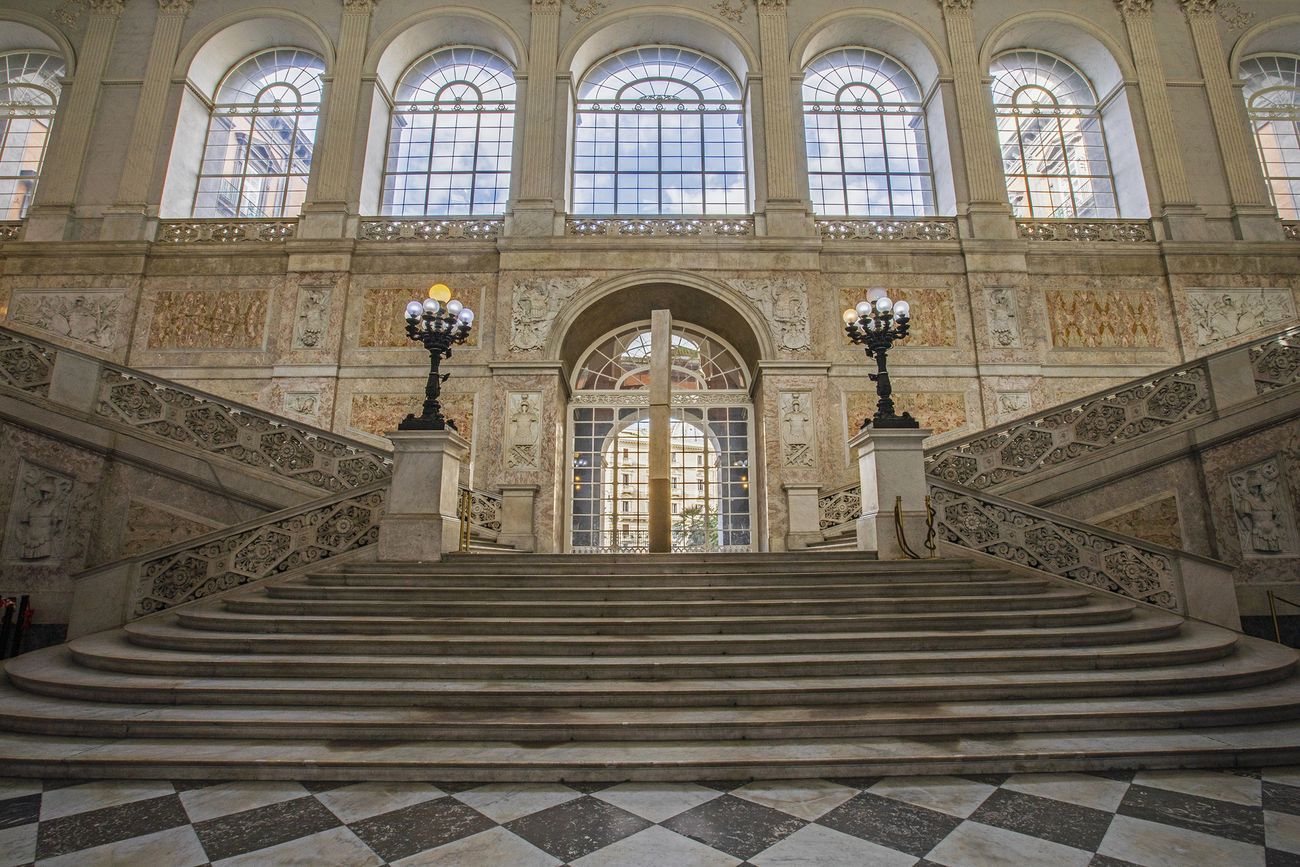VISIT NAPLES
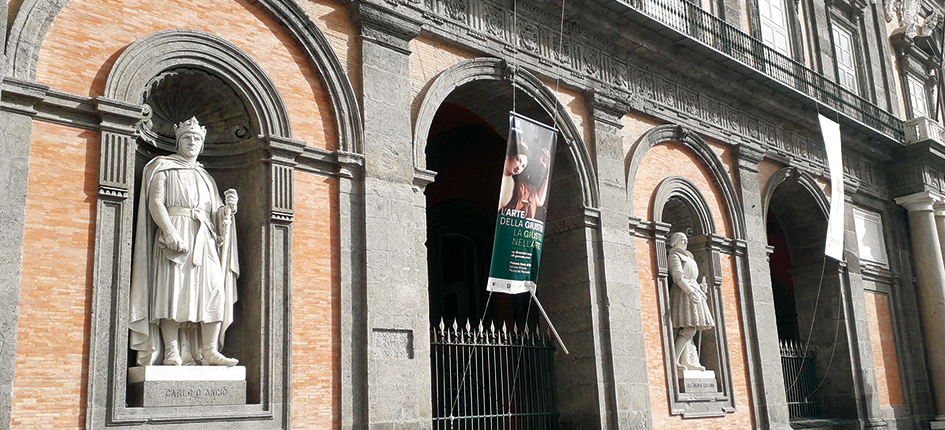
@ PALAZZO REALE DI NAPOLI
The magnificent Royal Palace Palazzo Reale di Napoli is situated within the heart of Naples and has been frequently highlighted by My Country magazine.
Well, we are back again this month with some latest updates
The Royal Palace houses the national library Biblioteca di Napoli – transferred here in 1925, but seriously damaged due to WWII bombings and the subsequent military occupation. The library holds a fascinating collection of documents including a large collection of papyrus scrolls from the ancient Roman archaeological site of Herculaneum – Ercolano (Villa dei Pisoni destroyed by the eruption of Mt. Vesuvius in 79 AD and original documents written by Alfonso d’Aragona (1455); the composer Giuseppe Verdi and major 19th century composers including Gioachino Rossini.
- The beautiful halls and historic apartments and studio’s with paintings and tapestries… a blast from the past.
The statues dominating the external western side of the palace facing the main square of Piazza del Plebiscito portray the rulers of the Kingdom of Naples dating from the 10th-century and are positioned in chronological order. The Palace was enriched by Murat and his wife Caroline Bonaparte with rich Neoclassic decor and furnishings during the Napoleonic occupation. It is notable that no statue along the façade of the royal palace Palazzo Reale refers to the Bourbon reign – not even Carlo di Borbone, engraved as Carlo III – Charles III the King of Spain.
- LATEST INFORMATION for visitors:
- All visitors are obliged to follow indicated routes, to be equipped with masks and to maintain a safety distance of at least 1.2 metres from others. Current anti-Covid 19 entrance methods are placing groups of up to 8 visitors a time for a maximum of 50 visitors per hour.
- Admission tickets are available directly at the ticket-office/info-point – but why not avoid the crowds! Reserve your tickets without added costs online here https:// www.coopculture.it/
- The garden “Giardino Romantico” and the “Cortili” Courtyards are open to the public without charge from 9 am to 7 pm except Wednesdays.
- The Guided Tours of the garden “Giardini Pensili” (as highlighted last March) are temporarily suspended until further notice. Bag storage and the use of audio guides are also temporarily suspended.
Fees: Standard admission – Euro 6,00; Reduced Euro 3,00; 18 – 25 yrs Euro 2,00; Under 18’s – Free Opening times: Daily from 9 am to 8 pm except Wednesdays. Last admission by 7 pm. Info: +39 081 580 8255
APP “ENJOY ALL PALAZZO REALE”
TOUR the MAIN WORKS: of Palazzo Reale, the library Biblioteca Nazionale di Napoli “Vittorio Emanuele III”, the theatre Teatro San Carlo and the castle Maschio Angioino/Castel Nuovo
by Smartphone or Tablet – So, scan the QR-code and Buon Viaggio!
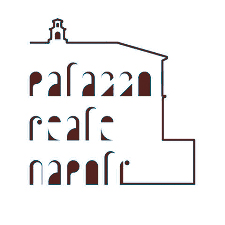 ALMOST HOME – THE ROSA PARKS HOUSE PROJECT – RYAN MENDOZA
ALMOST HOME – THE ROSA PARKS HOUSE PROJECT – RYAN MENDOZA
SEPTEMBER 15th 2020 to JANUARY 6th 2021
@ PALAZZO REALE DI NAPOLI 1, Piazza del Plebiscito
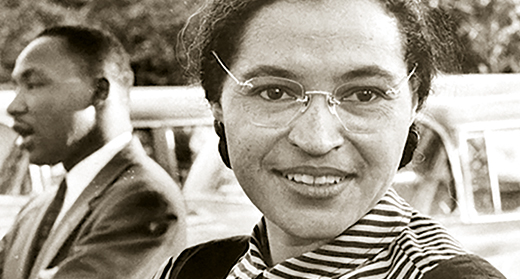
The royal palace of Naples Palazzo Reale di Napoli is currently hosting the free installation within the central courtyard – “Almost Home – The Rosa Parks House Project” created by the US artist Ryan Mendoza.
So, who was Rosa Parks? Rosa Parks was an Afro-American activist who became an important symbol during the struggle for civil rights in the USA during the 1950’s. She refused to give her seat to a white passenger on a segregated bus in Alabama in 1955 and was arrested for civil disobedience. The incident led to a one-year long bus boycott throughout the city.
After her famous act, Parks became known as the “Mother of the Civil Rights Movement” whilst losing her job and enduring death threats for years to come. She passed away in Detroit October 2005 – aged 92.
Rosa Parks house was originally located in the city of Detroit and was saved from demolition after her niece Rhea McCauley bought it from Detroit city authorities. She then tried to raise funds to renovate the then long-abandoned structure. She approached Mendoza on 2016 after struggling to find institutional support. Mendoza purchased and transported the house to his back-garden in Berlin in the same year.
Ryan Mendoza was born in New York in 1971 and created the projects “The White House” (2015), “The Invitation” (2016) and the renowned “The Rosa Parks House Project” (2017).
His art projects and paintings have been displayed in numerous museums and galleries throughout Europe, including – White Cube/ London, Galerie Lelong, Paris / New York, and Museo Madre/Italy Naples.
The 2017 award-winning documentary directed by Mendoza’s wife Fabia “The White house” offers an ample insight regarding Mendoza’s artistic activities and tells the story of The Rosa Parks House Project.
The Rosa Parks House Project may be considered as keeping alive not only the memory of Rosa Parks, but of all of those who lived there – during a dramatically conflictual historical moment of American history – with an identity unfortunately still under discussion today…
Entrance to the installation is without charge – on display until January 6th 2021
“Almost Home – The Rosa Parks House Project” is promoted by: Fondazione Morra Greco, Regione Campania, Direzione regionale Musei Campania
INFO: +39 081 19349740 info@fondazionemorragreco.com http://www.fondazionemorragreco.com
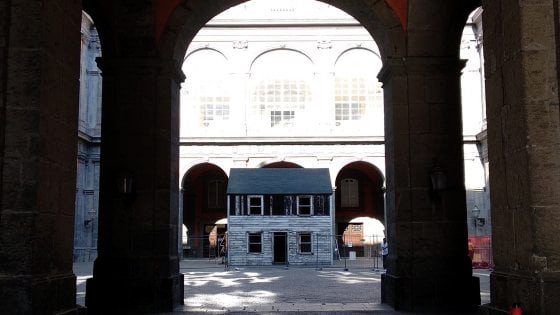
© My Country magazine
OCTOBER 2020 – pages 12-13
